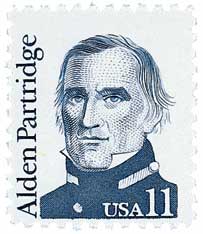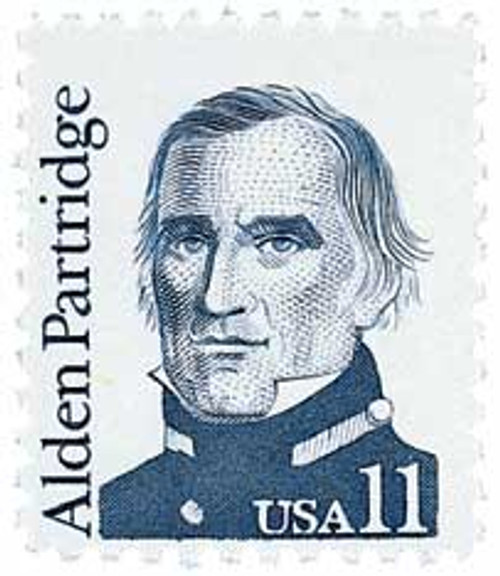
# M85-4 FDC - 1985 11c Alden Partridge
Birth Of Alden Partridge
The son of a Revolutionary War veteran that fought at Saratoga, Partridge was a studious and outdoorsy child. He enjoyed hiking the Green and White Mountains and worked on his father’s farm in addition to attending school.
Partridge attended Dartmouth College as well as the U.S. Military Academy at West Point. After graduation, he was made a lieutenant of engineers and appointed assistant professor of mathematics at West Point. In 1808, Partridge was promoted to professor of mathematics and also became acting superintendent.
Partridge was an active West Point superintendent and stressed the importance of physical fitness. He often personally led the cadets on long marches in New York and other nearby states. Partridge also made church service mandatory for his cadets and occasionally prepared and delivered his own sermons. In 1813 he was named professor of engineers and officially appointed superintendent the following year. Nicknamed “Old Pewt,” he became known as a strict disciplinarian.
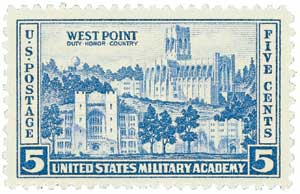
West Point’s “Long Gray Line” also began under Partridge’s leadership. In 1814 there was a shortage of blue cloth, so he approved the creation of gray uniforms. Two years later when the War Department was tasked with choosing a new cadet uniform, they chose gray because, “it better suits the finance of the cadets than one of blue.”
In 1817 President James Monroe appointed Partridge’s former student (but superior officer) Sylvanus Thayer to replace him as superintendent. Partridge initially refused but after a court martial agreed to resign in 1818.

That same year, Partridge was tasked with training a New York City volunteer infantry company and delivering a series of lectures on military science and education. Through these lectures Partridge called for a new type of local military education system, as opposed to the national academy system. He believed that the national academies produced military elite, rather than citizen soldiers like the great generals of the past such as George Washington and Andrew Jackson. Under Partridge’s plan, each state would have its own military departments with local soldiers in militias and units similar to the Minutemen of the Revolution. His plan also called for military officer programs in each department.
Partridge had to take a break from his planning when he was tasked with surveying and establishing the border between the U.S. and Canada as outlined in the Treaty of Ghent. He mapped the watersheds of the Saint Lawrence and Hudson Rivers before resigning so he could return to planning his own military college program.
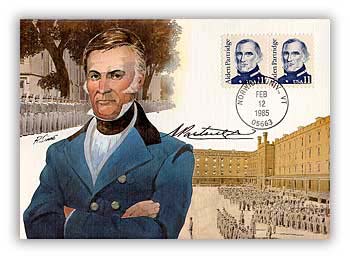
In 1819 Partridge established his school – the American Literary, Scientific, and Military Academy, known today as Norwich University. During its first four years, the school had 480 students from 21 of the 24 states at the time. The school briefly moved to Middletown Connecticut for three years, but eventually returned to Norwich and later Northfield, Vermont.
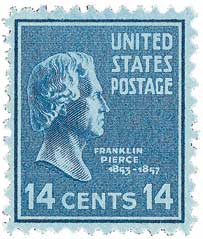
In the coming years, Partridge founded six more military colleges in Virginia, Pennsylvania, Delaware, and New Hampshire. He also worked with faculty members as well as militia officer and future president Franklin Pierce to increase recruits and improve training and readiness of state militias.
In addition to his military career, Partridge worked as Vermont’s Surveyor General and served four terms in that state’s House of Representatives. Partridge died on January 17, 1854 in Norwich. His legacy largely lies in the founding of Norwich University, which remains America’s oldest private military college. It’s also known as the birthplace of the ROTC, because it was the first school to offer the Reserve Officers Tra
Birth Of Alden Partridge
The son of a Revolutionary War veteran that fought at Saratoga, Partridge was a studious and outdoorsy child. He enjoyed hiking the Green and White Mountains and worked on his father’s farm in addition to attending school.
Partridge attended Dartmouth College as well as the U.S. Military Academy at West Point. After graduation, he was made a lieutenant of engineers and appointed assistant professor of mathematics at West Point. In 1808, Partridge was promoted to professor of mathematics and also became acting superintendent.
Partridge was an active West Point superintendent and stressed the importance of physical fitness. He often personally led the cadets on long marches in New York and other nearby states. Partridge also made church service mandatory for his cadets and occasionally prepared and delivered his own sermons. In 1813 he was named professor of engineers and officially appointed superintendent the following year. Nicknamed “Old Pewt,” he became known as a strict disciplinarian.

West Point’s “Long Gray Line” also began under Partridge’s leadership. In 1814 there was a shortage of blue cloth, so he approved the creation of gray uniforms. Two years later when the War Department was tasked with choosing a new cadet uniform, they chose gray because, “it better suits the finance of the cadets than one of blue.”
In 1817 President James Monroe appointed Partridge’s former student (but superior officer) Sylvanus Thayer to replace him as superintendent. Partridge initially refused but after a court martial agreed to resign in 1818.

That same year, Partridge was tasked with training a New York City volunteer infantry company and delivering a series of lectures on military science and education. Through these lectures Partridge called for a new type of local military education system, as opposed to the national academy system. He believed that the national academies produced military elite, rather than citizen soldiers like the great generals of the past such as George Washington and Andrew Jackson. Under Partridge’s plan, each state would have its own military departments with local soldiers in militias and units similar to the Minutemen of the Revolution. His plan also called for military officer programs in each department.
Partridge had to take a break from his planning when he was tasked with surveying and establishing the border between the U.S. and Canada as outlined in the Treaty of Ghent. He mapped the watersheds of the Saint Lawrence and Hudson Rivers before resigning so he could return to planning his own military college program.

In 1819 Partridge established his school – the American Literary, Scientific, and Military Academy, known today as Norwich University. During its first four years, the school had 480 students from 21 of the 24 states at the time. The school briefly moved to Middletown Connecticut for three years, but eventually returned to Norwich and later Northfield, Vermont.

In the coming years, Partridge founded six more military colleges in Virginia, Pennsylvania, Delaware, and New Hampshire. He also worked with faculty members as well as militia officer and future president Franklin Pierce to increase recruits and improve training and readiness of state militias.
In addition to his military career, Partridge worked as Vermont’s Surveyor General and served four terms in that state’s House of Representatives. Partridge died on January 17, 1854 in Norwich. His legacy largely lies in the founding of Norwich University, which remains America’s oldest private military college. It’s also known as the birthplace of the ROTC, because it was the first school to offer the Reserve Officers Tra





